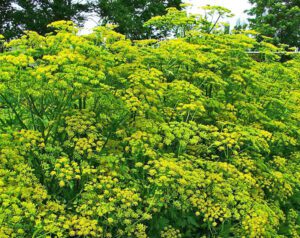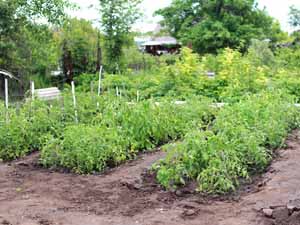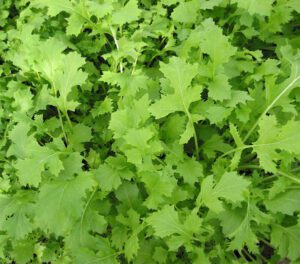Growing celery organically in home garden may be challenging for some home gardeners, especially for the beginners.
Celery is actually a wetland plant, so if you can ensure the soil where the plants are grown is moist then you can grow this crunchy vegetable.
Home grown celery is not only crunchy but also more flavorful than what you usually find in the stores.
Along with this, the commercially grown celery is one of the most chemical fertilizer and pesticide-laden crops. So growing celery organically in home garden can be an excellent way for enjoying this vegetable.
Celery (Apium graveolens) is grown and eaten around the world as a vegetable. It is especially used in weight-loss diets, where it provides low-calorie dietary fiber.
In some areas, celery is also grown for it’s seeds and the oil from the seeds is used in the perfume industry.
Celery is a long-season vegetable that is grown in the spring or fall. It can be a great addition to your garden. And growing celery is relatively easy if you understand it’s specific needs.
How to Grow Celery
As we mentioned above ‘growing celery is relatively easy if you understand it’s specific needs’. Here we are describing all about growing celery organically in home garden from planting, caring to harvesting.
Select a Variety
First of all, you have to choose a variety that grows well in your area. Consult with some other home gardeners in your area for better recommendation. Some popular celery varieties are Alfina, Conquistador and Utah 52-70R Improved.
Purchase Seeds
After selecting the variety, purchase seeds from any of your nearest seed stores. Hope you will be able to find your desired variety. Today there are some seed suppliers with online stores, so you can also order online.
Best Time for Growing Celery
Celery is a long-season vegetable which is grown in the spring or fall, but will not be able to tolerate high heat.
As the celery growing season is very long (130 to 140 days of mostly cool weather), so the seeds should be started indoors for the best success rate.
Sow the seeds in summer (so that you can set out transplants 10-12 weeks before the first autumn frost) for a fall crop. And sow the seeds 10-12 weeks before the average last frost date for a spring crop.

Preparing the Soil
You can use any type of soil for growing celery, with the availability of either full sun or part sun.
But celery plants generally do very well in rich, fertile soil with plenty of organic matter mixed in it.
So, prepare the soil by adding organic fertilizers before planting. You can use well-rotted aged manure or homemade compost before planting.
Planting
Celery is grown from seeds. Sow the seeds directly in the soil (surface) and don’t cover the seeds with soil for getting good germination rate.
And before sowing, soak the seeds in warm water for up to 12 hours and doing this will help to germinate the seeds faster. In most varieties, you can expect germination within one week.
Transplant the seedlings when they are about 2 inches tall and plant them at least two inches apart. Planting the seedlings in rows will be good.
Space 8-12 inches between the rows. Don’t forget to harden off the seedlings before transplanting (do this by reducing water slightly, and keeping them outdoors for a couple of hours a day).
If you plant the seeds directly in the soil, thinning will be required. Thin the plants at least 2 inches apart and 8-12 inches apart in rows.
Caring
Celery plants require additional caring for better growth. Here we are describing more about the caring steps for growing celery.
Feeding/Fertilizing
The celery plants are heavy feeders and they require very fertile soil rich with organic materials. The plants also need to be fertilized during their growth period.
Ensure the nutrients are in the top of the soil, because roots of the celery plants are shallow. You can use homemade compost or aged manure for additional fertilization.
Watering
Celery is actually a wetland plant and they require moist soil for growing. So ensure a constant, unfailing water supply for growing celery in your home garden.
The soil must have to be kept watered at all times, otherwise the plants won’t grow well. If celery has a spell without water, it will be problematic (stringy, tough, and/or hollow stalks).
Mulching
Mulching not only helps to retain moisture in the soil but also helps to prevent most of the weeds from your garden. So mulch the plants after they are at least 6 inches tall.
Mulching will also help to keep the roots of the celery plants cool. You can use any kind of organic materials for using as mulch such as hay, straw, grass clippings, copped dried leaves or homemade compost.
Controlling Weeds
Controlling weeds is also essential for growing celery. Because weeds will consume most of the nutrients from the soil.
Regular hoeing can be helpful for controlling weeds, but be careful because the roots of the celery plants are shallow.
Pests and Diseases
Celery plants are susceptible to some pests, just like many other vegetables (but they are less susceptible to diseases).
Earwings, flea beetles, slugs and snails are some common pests for the celery plants.
You can cover the plants with garden fabric during the first 4-6 weeks of the growing season for controlling pests. And destroy the affected leaves or the whole plants if you notice any pests or insects.
Harvesting
The stalks of the celery plants are mainly harvested (which will be above the ground).
Actually, you can pick the stalks whenever you want (the young celery is as good as the mature one).
You can expect to start harvesting when the stalks are about 8 inches tall.
Remember, the darker the stalks become the more nutrients they will contain. Texture also changes with color, the dark green stalks will be tougher.
Hope you have enjoyed this guide for growing celery organically in home garden. Just remember, celery is actually a wetland plant, so you have to ensure the soil is always moist. Good luck!






